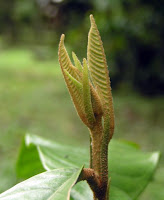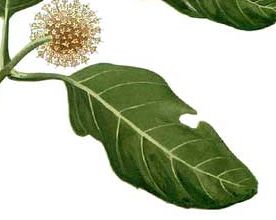RESSAK (Vatica sp) The important species in lowland Tropical Rainforest
Background
The high of biodiversity of both plants and trees is the special charateristic of tropical forest ecosystems. The high intensity of rainfall and humidity as well as seasonal differences that caused many species can grow well in tropical forests. One of many important trees in the tropical rainforest of Indonesia is a sub family of Dipterocarpaceae. The Dipterocarpaceae. divided into 13 genera, 470 species. Among the 13 generas 9 of them are in Indonesia, namely Shorea, Dipterocarpus, Dryoblanops, Hopea, Vatica, Cotylelobium melanoxylon, Parashorea, Anisoptera and Upuna. Since the 1970s, the era of exploitation of timber harvesting in forests outside Java were very intensively done by the concession holders, the most sold out of this plant as a commercial commodity in wood market all over the world can be said it was out of control. Almost all types of Dipterocarpaceae is the most hunted wood to meet the demand for wood is caused it became scarcity
One genus of Dipterocarpaceae in the world timber trade known as Resak. Foxworthy (1932;13) mentioned that in the Malay Peninsula is believed to be the type of wood product resak Vatica bancana Scheff, Vatica cinerea King, Vatica Curtisii King, Vatica dyerii Pierre. Vatica lowii King, Vatica maingayi Dyer, Vatica nitens King, Vatica pallida Dyer, Vatica perakensis King, Vatica Vatica Scortechinii reticulata King and King. Other kind of them which were widely known Vatica oblongifolia, Vatica grenulata, Vatica rassak, Vatica vebulosa
Post a massive exploitation in the 1970s -1990s, as the decline in timber produced by natural forests, which dominated by the kinds Dipterocarp before, predicted that the existence of increasingly rare species of Vatica. Dipterocarp which generally require certain requirements will be increasingly urgent concern Vatica species become increasingly rare. Scarcity and even extinction due to exploitation of this type that is not balanced with adequate regeneration can be a great loss not only for the wealth of germplasm but also to the development of forestry science. As is it known, in ecological character of tropical forests with closed nutrient systems are highly vulnerable to damage. Slightest changes to one element of the ecosystem will make the occurrence of ecosystem degradation.
Spread of Ressak
Some sources mention the genus of Vatica, like generally members of the family of Dipterocarpaceae has spread widely in South Asia and Southeast Asia from Sri Lanka, Thailand, Malay Peninsula, Sumatera, Java, Borneo, Maluku and Papua.
In natural forests of this region vatica is associated with the other members of the genus of Dipterodarpaceae families forming mixed forests in Indonesia. Sumatra and Borneo Vatica known mixed together with the kind of Dipterocarpus, Shorea, Hopea and Anisoptera. In Region of Sulawesi, Maluku and Papua Vatica found together with the Shore, Instia, pomatia and Hopea.
Habitat of Growing Places
Almost all species of Vatica resak known in the local naming and trading. Type of resak trees commonly are not too great it’s height about of 130 feet and diameters up to 38 inches (Foxworthy 1932:249). This species habitat is often located in lowland forests, the scattered existence.
Foxworthy (1932:250) states that most Vatica only grew in the lowlands, usually below 1000 feet. Species Vatica cinerea , found living on the beach at certain islands in the western part of the Malay Peninsula. Vatica wallichii live on the edge of the river in the swamp area. However, other type of resak can also live in hilly areas up to 2800 feet above the water surface. In Indonesia, most of the genus Vatica living in lowland wet climate with high humidity in height up to 1500 above sea level and the average rainfall over 2000 mm per year with a short dry season . The types that can be encountered in such conditions, including Vatica oblongifolia, Vatica grenulata and Vatica dulitensis
The high of biodiversity of both plants and trees is the special charateristic of tropical forest ecosystems. The high intensity of rainfall and humidity as well as seasonal differences that caused many species can grow well in tropical forests. One of many important trees in the tropical rainforest of Indonesia is a sub family of Dipterocarpaceae. The Dipterocarpaceae. divided into 13 genera, 470 species. Among the 13 generas 9 of them are in Indonesia, namely Shorea, Dipterocarpus, Dryoblanops, Hopea, Vatica, Cotylelobium melanoxylon, Parashorea, Anisoptera and Upuna. Since the 1970s, the era of exploitation of timber harvesting in forests outside Java were very intensively done by the concession holders, the most sold out of this plant as a commercial commodity in wood market all over the world can be said it was out of control. Almost all types of Dipterocarpaceae is the most hunted wood to meet the demand for wood is caused it became scarcity
One genus of Dipterocarpaceae in the world timber trade known as Resak. Foxworthy (1932;13) mentioned that in the Malay Peninsula is believed to be the type of wood product resak Vatica bancana Scheff, Vatica cinerea King, Vatica Curtisii King, Vatica dyerii Pierre. Vatica lowii King, Vatica maingayi Dyer, Vatica nitens King, Vatica pallida Dyer, Vatica perakensis King, Vatica Vatica Scortechinii reticulata King and King. Other kind of them which were widely known Vatica oblongifolia, Vatica grenulata, Vatica rassak, Vatica vebulosa
Post a massive exploitation in the 1970s -1990s, as the decline in timber produced by natural forests, which dominated by the kinds Dipterocarp before, predicted that the existence of increasingly rare species of Vatica. Dipterocarp which generally require certain requirements will be increasingly urgent concern Vatica species become increasingly rare. Scarcity and even extinction due to exploitation of this type that is not balanced with adequate regeneration can be a great loss not only for the wealth of germplasm but also to the development of forestry science. As is it known, in ecological character of tropical forests with closed nutrient systems are highly vulnerable to damage. Slightest changes to one element of the ecosystem will make the occurrence of ecosystem degradation.
Spread of Ressak
Some sources mention the genus of Vatica, like generally members of the family of Dipterocarpaceae has spread widely in South Asia and Southeast Asia from Sri Lanka, Thailand, Malay Peninsula, Sumatera, Java, Borneo, Maluku and Papua.
In natural forests of this region vatica is associated with the other members of the genus of Dipterodarpaceae families forming mixed forests in Indonesia. Sumatra and Borneo Vatica known mixed together with the kind of Dipterocarpus, Shorea, Hopea and Anisoptera. In Region of Sulawesi, Maluku and Papua Vatica found together with the Shore, Instia, pomatia and Hopea.
Habitat of Growing Places
Almost all species of Vatica resak known in the local naming and trading. Type of resak trees commonly are not too great it’s height about of 130 feet and diameters up to 38 inches (Foxworthy 1932:249). This species habitat is often located in lowland forests, the scattered existence.
Foxworthy (1932:250) states that most Vatica only grew in the lowlands, usually below 1000 feet. Species Vatica cinerea , found living on the beach at certain islands in the western part of the Malay Peninsula. Vatica wallichii live on the edge of the river in the swamp area. However, other type of resak can also live in hilly areas up to 2800 feet above the water surface. In Indonesia, most of the genus Vatica living in lowland wet climate with high humidity in height up to 1500 above sea level and the average rainfall over 2000 mm per year with a short dry season . The types that can be encountered in such conditions, including Vatica oblongifolia, Vatica grenulata and Vatica dulitensis





Comments